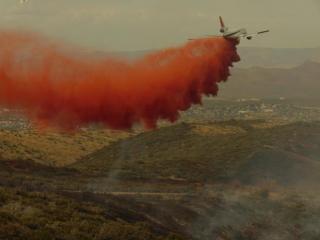Aerial Firefighting Use and Effectiveness (AFUE)
The Aerial Firefighting Use and Effectiveness (AFUE) Study was initiated in 2013 to answer a general, but complex question: “What are the best mixes of aircraft to do any fire suppression job?” Data collected from this study and other sources will be used to inform decisions about the composition of the interagency wildland firefighting aircraft fleet.
The nationwide, multi-year AFUE study is chartered by the U.S. Forest Service Fire and Aviation Management Program and published in March 2020. The AFUE Study uses four “observation modules,” each comprised of three qualified firefighters, as well as a dedicated aircraft, to collect ground and aerial data at wildfires throughout the nation during fire season.



For more information, refer to Related Content at the top of this page, left column.

